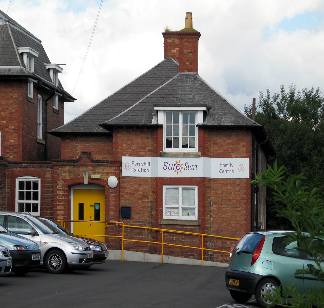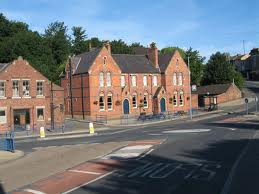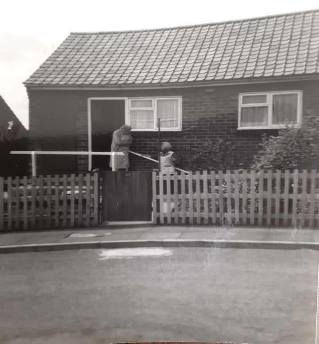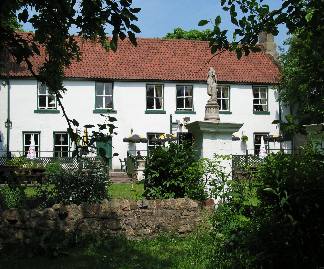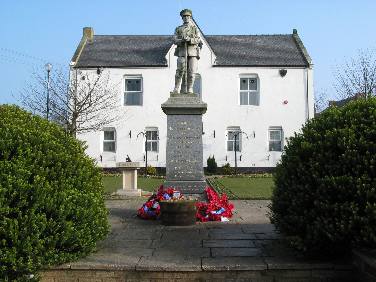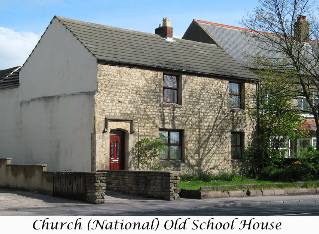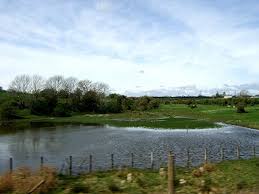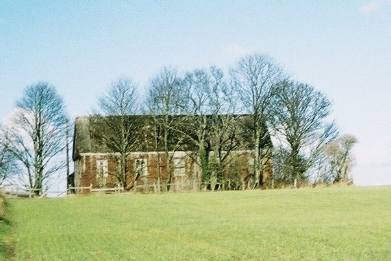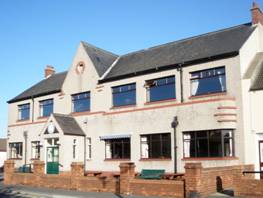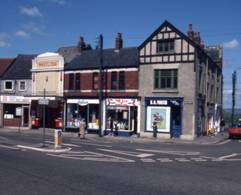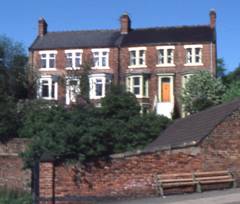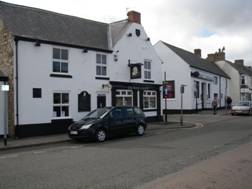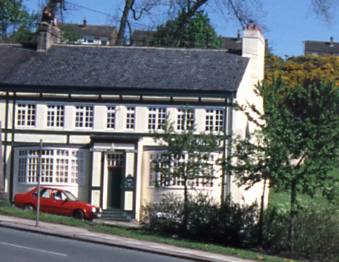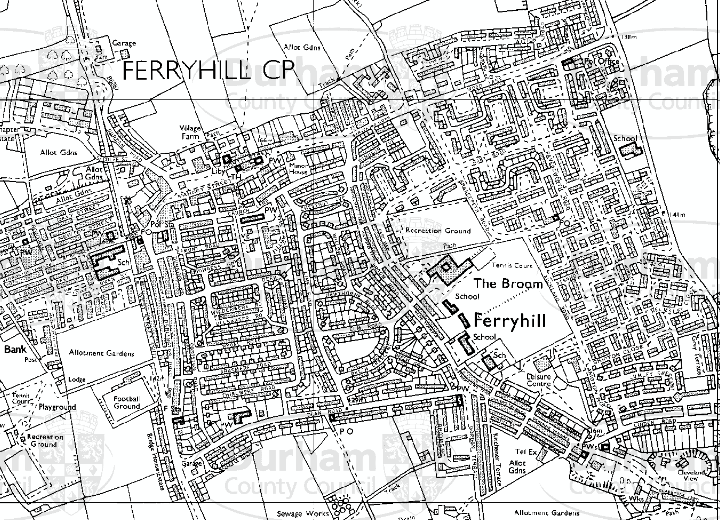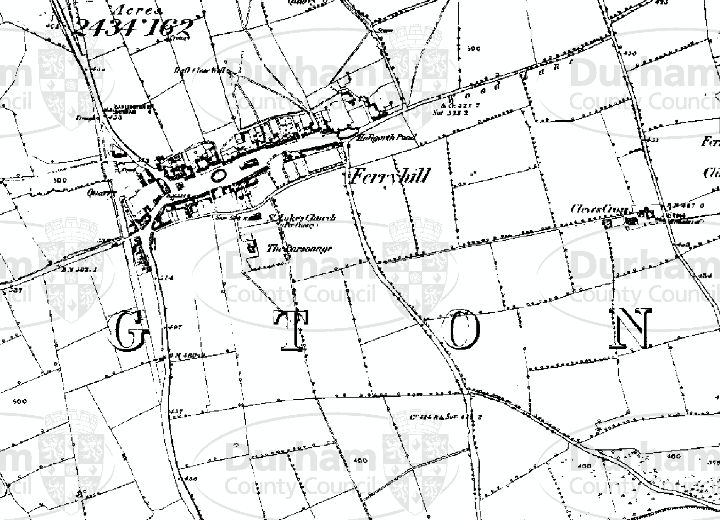The village of Ferryhill lies seven miles to the south of Durham on the Old Great North Road (A167). It was a typical Durham mining village, and rows of miner's houses cover the hilltop. The steep hill leads to a long narrow market place with a Victorian town hall. The Town Hall which was built in 1867 on the site of old cottages provided for the poor and has been used over the years as a library and reading room but today houses the offices of the Town Council
The oldest remains from the area all date to the Bronze Age, a period when there was a great period of expansion in early farming. A rough copper axe was found at Red Hall Farm- it might have been used to clear trees from land, in preparation to farming. However, a bronze spearhead found at Chilton Quarry, show that life was not necessarily peaceful, and that there was a need for weapons.
Despite these Bronze Age finds, we know little about other aspects of prehistoric life in this area. No settlements at all have been found. However, this is not surprising, prehistoric settlements usually only survive as cropmarks. The heavy coal mining in the area will probably have destroyed these.
Neither are there any remains of Roman buildings, yet whilst no settlements are known, a number of objects of this date have been found. For example, the fragments of pottery discovered at Thinford are probably indicators of a larger Roman site. The same applies for the Roman pottery found at Strawberry Hill.
Unusually, there are actual archaeological remains from the Anglo-Saxon period. The remains of a small building and fragments of a carved bone mount were found during building work on the police station. The place name of the village itself probably comes from the Old English word 'fiergen', meaning 'wooded hill'.
By the middle ages, the area was quite densely settled. Although Ferryhill was not recorded in the Boldon Book there was certainly a settlement there. It was first recorded in a collection of charters written in 1256. Another medieval village stood at Thrislington, which was first recorded in 1262. Thrislington had disappeared by the 17th or 18th century, and was excavated by archaeologists shortly before its destruction by quarrying. One particularly interesting medieval monument is Cleve's Cross, believed to have been where a medieval knight, Roger de Fery, killed a wild boar, known as the Brawn of Brancepeth.
Before the Reformation, Ferryhill was the property of the Priory of Durham, but after the Reformation it was given to the Dean and Chapter of the Cathedral. The area remained a mainly agricultural area. In the late 17th century Ferryhill was the site of a tragic murder. Andrew Mills, a servant boy, killed his employer's three children at Brass Farm, now High Hill House Farm. The site of the gibbet on which he was hung is still known.
Things began to change in the 19th century, when the railway arrived (1840). Ferryhill Station Goods Yard was once believed to be the busiest goods yards in the North England, and during World War II it housed all the rail stock from York.
The first blast furnace was constructed in 1850, and coal mining increased when a major mine, the Dean and Chapter Colliery, was dug in 1902. Leasingthorne was sunk in 1842, Little Chilton (Bull Crag) 1852, Broom 1870, Chilton 1872, East Howle 1873 and Mainsforth 1876. Dean and Chapter had a large steam powered engine, which was only demolished in the 1980s. Another colliery, Mainsforth Colliery, was dug in 1904. These mines became the main employers in the area, and many houses were built to house the miners. Nine hundred and ninety nine houses were built in 1914 for the workers from Dean and Chapter Colliery. In 1939 the number of miners was so great that some had to be housed in temporary huts built behind the Post Office in Dean Road.
In 1829 a chapel was built at the east end of the market square. Ferryhill was separated from the Parish of Merrington in 1843 and a new parish was formed consisting of the townships of Ferryhill and Chilton. In 1853 the chapel was demolished and the present St Luke's Church was built on the south side of the village using materials from the old chapel.
Like many areas in Durham the mines have now all shut. An Industrial estate has been built on the site of Dean and Chapter Colliery and sports complex on the site of Mainsforth Colliery.
The contirbutions of the inhabitants of Ferryhill in the First World War and WW2 are commemorated at a number of sites around the parish. The garden in the grounds immediately to the west of the Town Hall contain two memorials, one in the form of a statue of a DLI soldier, the other a cross. Each of these memorials bear the names of those of Ferryhill and surrounding settlements who gave their lives in service of their country. Other memorials include a memorial cottage built in 1925 and a WW1 plaque and decorative rood screen in the parish church along with a WW2 stained glass window.
Reference number:
D6793
Event(s):
The identification of Historic Landscapes in Durham Project; Chris Blandford Associates
Ferryhilll Village Atlas Project 2012 - 2015; The Archaeological Practice Ltd

